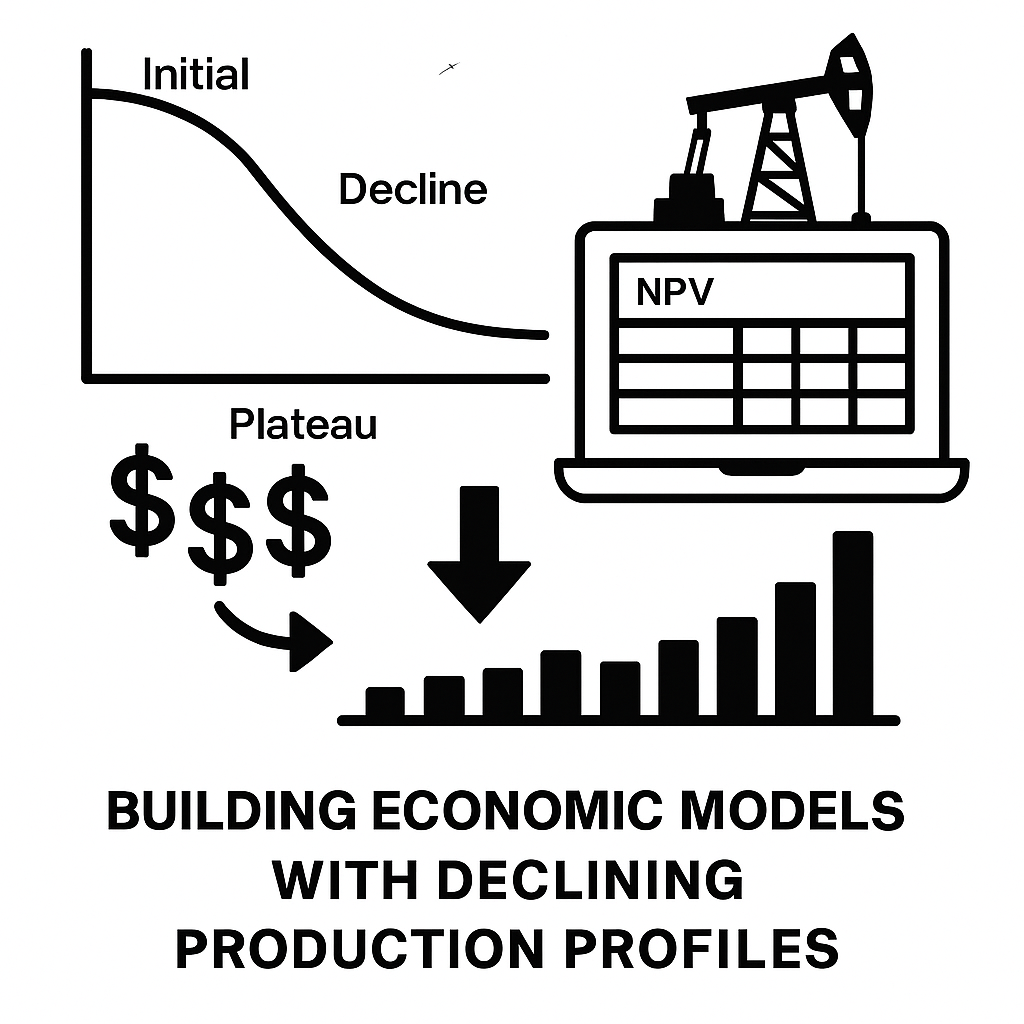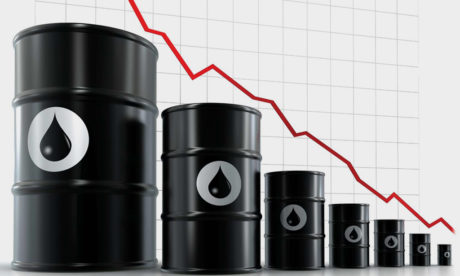
How to Forecast Financial Viability as Output Declines in Oil & Gas
In oil and gas, one truth cuts across every producing asset: production declines over time. Whether you’re working with a conventional reservoir or a shale play, understanding and modelling this decline is essential for building accurate economic forecasts.
When companies overestimate production or fail to adjust financial models to reflect declining output, they risk distorted project economics, misaligned investments, and operational inefficiencies. That’s why mastering the art of building economic models with declining production profiles is crucial for upstream success.
What Are Declining Production Profiles?
Declining production profiles represent the gradual decrease in reservoir output over time. This natural phenomenon occurs as reservoir pressure drops and hydrocarbon volumes diminish.
There are three commonly used decline curve types:
- Exponential Decline: Constant percentage decrease over time
- Hyperbolic Decline: Decline rate reduces gradually (most common in shale reservoirs)
- Harmonic Decline: Very gradual, approaching zero only asymptotically
These curves are used to predict the remaining recoverable reserves, estimate production life, and inform economic decision-making.
Why Decline Modelling Is Critical to Economic Evaluation
Understanding production decline is more than just a technical exercise—it’s the foundation of economic modelling in oil and gas. Here’s why it matters:
- Cash Flow Accuracy: Revenue forecasts directly depend on production volume projections.
- Key Economic Metrics: NPV, IRR, and Payback Period are all affected by how decline is modelled.
- Investor Confidence: Accurate forecasting builds trust with stakeholders and financiers.
- Field Development Strategy: Decline profiles inform well spacing, artificial lift planning, and EOR decisions.
In short, if your decline assumptions are wrong, your economics are wrong.
Key Components of a Decline-Based Economic Model
To build an effective model, you’ll need more than just decline equations. Key inputs include:
- Initial Production Rate (IP): The starting point for forecast modelling
- Decline Rate (Di): Estimated based on production history or type curve data
- Production Duration: How long the well or field is expected to produce economically
- CAPEX & OPEX: Capital and operating costs per phase or barrel
- Commodity Price Forecasts: Based on forward curves or internal planning scenarios
- Fiscal Terms: Royalties, taxes, PSCs, and cost recovery models
- Discount Rate: Used to calculate Net Present Value (NPV)
These elements combine to give a full economic picture, adjusted for reality, not optimism.

Tools and Techniques for Modelling
Here’s how professionals typically approach building these models:
- Excel-Based Decline Models: Still widely used, incorporating Arps equations with linked financial outputs
- Scenario Planning: High, base, and low case production profiles built into dynamic models
- Software Tools:
- PEEP, Merak, PetroVR, ARIES – Used for integrated petroleum economics
- Power BI, Spotfire – For visualisation and forecasting dashboards
- PEEP, Merak, PetroVR, ARIES – Used for integrated petroleum economics
Cross-Functional Alignment: Collaboration between reservoir engineers, planners, and finance teams
Common Pitfalls to Avoid
Even experienced teams can misstep when modelling decline. Common mistakes include:
- Overestimating production life or recovery factor
- Applying one-size-fits-all decline rates across different fields
- Failing to adjust for downtime, shut-ins, or workover impacts
- Not updating the model regularly with actual field data
- Ignoring abandonment and late-life costs in the economic forecast
A good model evolves as the asset does.
Best Practices for Reliable Forecasting
To ensure your decline-adjusted economic model is accurate and decision-ready:
- Use realistic, data-driven assumptions
- Validate your forecast with field history and analogue wells
- Incorporate risk through sensitivity analysis
- Update regularly with actual production data
- Account for tail-end costs and terminal value
Remember: conservative, transparent assumptions build stronger, longer-lasting models.
The IAA Advantage
At IAA Energy Resources, we help technical and commercial professionals bridge the gap between subsurface data and financial performance. Through practical training, real-world examples, and expert facilitation, we empower teams to model decline-adjusted cash flows with confidence.
Whether you’re an engineer transitioning into a planning role or a financial analyst looking to sharpen your technical understanding, we’ll help you build models that reflect reality and drive better decisions.
Ready to level up your team’s economic modelling skills?
Email us at info@iaaenergyresources.com to discuss training programs tailored to your team or project needs.






0 responses on "Building Economic Models with Declining Production Profiles"